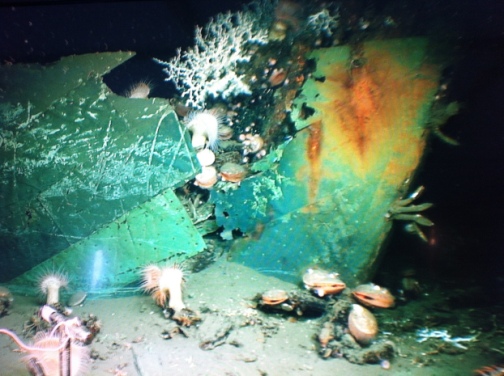Microbial Biogeography
Microbes, like all living organisms, have biogeography (non-random distribution in space and time). In marine systems, the local environment (salinity, temperature, bathymetry) plays a role in shaping microbial biogeography. Another key element in shaping biogeography is what habitats are available for organisms to make use of.

Shipwrecks
Historic shipwrecks function as artificial reefs, providing food, refuge, and structural basis for many micro- and macroorganisms. They become unique habitats on the seafloor, and thus shape biogeography, and microbial diversity. Historic shipwrecks are also non-renewable resources and provide critical information on maritime history, and past and modern economies. With more than 2000 reported historic shipwrecks, the Gulf of Mexico offers exciting opportunities for shipwreck discovery, and how the shipwrecks shape microbial life in the deep-sea.
 Through the Microbial Stowaways project, our exploration of two, un-investigated shipwrecks will provide information about their cultural history and ecological role in the deep-sea environment. The deep ocean holds important records of maritime history, and remains a frontier for discovery in microbiology. This project will bring experts in microbial ecology and archaeology together to shed new light on the built environment in the deep-sea.
Through the Microbial Stowaways project, our exploration of two, un-investigated shipwrecks will provide information about their cultural history and ecological role in the deep-sea environment. The deep ocean holds important records of maritime history, and remains a frontier for discovery in microbiology. This project will bring experts in microbial ecology and archaeology together to shed new light on the built environment in the deep-sea.
